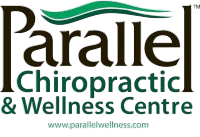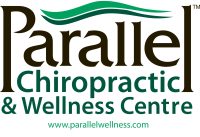Your Feet May be Causing Your Lower Back Pain
Originally posted by the Alberta College and Association of Chiropractors
Can’t seem to find an answer as to why your back is aching? The answer might lie right below you … your feet.
It’s easy to assume aches in pains in our backs are originating from where you are actually feeling it. So if your back hurts, it must be coming from an issue within your back, right? This is not necessarily the case. Everything in our bodies is connected through tissue and our nervous system.
How are my feet inter-connected to my back and why does this cause me pain?
Your body has three main shock absorbers: your feet, your knees and your spine. The shock of walking, running, jumping etc. is first felt by your feet. If your feet can’t handle the shock, it passes the impact absorption to your knees. When your knees are ill-equipped to handle the shock it passes the absorption to the last stop on the chain, your back. Your back will eventually fatigue and begin to cause you pain, especially if there is a misalignment in the lower region or the pelvis.
Why can’t my feet handle the shock in the first place?
Most of the problems associated with our backs caused by our feet are simply because of the surfaces we walk on. Our feet were designed to walk on grass, sand, dirt, mud and other natural terrain. Human innovation has brought us cement, tile, wood, etc. which are actually detrimental to the health of our feet and in turn our back. Natural terrain is suited to the shape and structure of our feet. This causes our arches to be supported and causes the muscles, ligaments and tendons of the foot and ankle to work in a supportive fashion.
How can I prevent this cycle of pain?
Shoes- Find the right kind of shoe to support your foot type. If you have flat feet or have a minimal arch, shoes that have a good amount of cushioning or stability will work best to absorb the shock.
If you have a pronounced arch, “Minimal” shoes are a specialized option to consider. These shoes are designed to promote the foot striking the ground with the front or middle of the foot rather than the heel.
Sorry folks, there are no high-heels on the planet that are going to do anything good for your feet or back, so try and wear them as sparingly as possible.
Chiropractic adjustment – A visit to your chiropractor can do wonders. First, they will check the joints in your feet and ankles are working properly. Your chiropractor will perform an examination, which could include examining your feet, analyzing your gait and posture, requesting an x-ray and checking your shoes for improper wear.
If it’s determined that your feet are the cause of your back pain, your chiropractor will develop a program, which may include an adjustment of the foot to stabilize your postural foundation and to help relieve related stress/pain to the rest of your body.
Custom Orthotics – Your chiropractor may also suggest individually fitted, orthotic arch supports if they’ve determined your feet to be the cause of your back discomfort.
Orthotic arch supports are heat moldable plastic shoe inserts designed to support the arch on the inside of the foot. Orthotics also help in realigning your foot’s ankle joints and bones.
For more blogs and information like this, follow us on Twitter or like us on Facebook.

